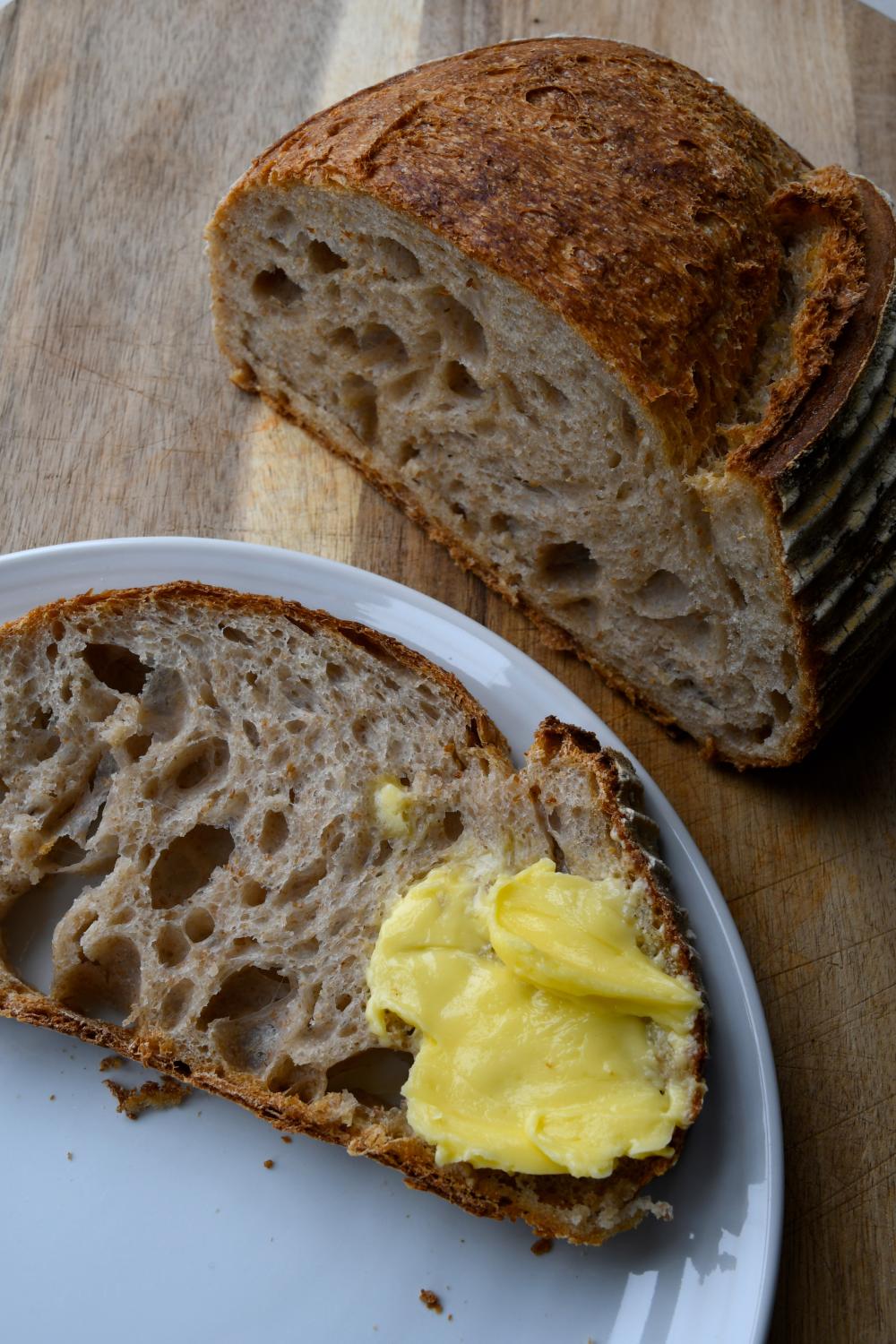Our Head Baker Chris Holister created this recipe for our organic heritage wheat flours, using a combination of our heritage white and wholemeal flours.
These two flours are milled from a blend of over 150 heritage wheat varieties from Heritage Harvest, and grown organically by David Wilson only a few miles down the road from the Mill at Broadfield Farm. Each year the population is resown from farm saved seeds. The diversity of varieties helps to ensure the crop will survive difficult weather conditions, and adapts to climate change. By championing such grains we hope to contribute to the preservation of the biodiversity of our cereals and our lands for the future, as well as creating flours with fantastic flavours. These flours have fragrant notes of grass and hay, that almost smell of the countryside they have come from.
Some tips on working with these heritage grains:
The gluten in them is more delicate than compared with, for example, a strong Canadian white flour, and the dough needs more gentle handling, and takes less water. It doesn’t work as well if pushed too far with very long fermentation times or high temperatures, so for the best results handle with a bit more care. The crust of this sourdough is slightly crackly, almost like a baguette, rather than chewy, and these two flours create a soft crumb.
Makes one large loaf, 850g

